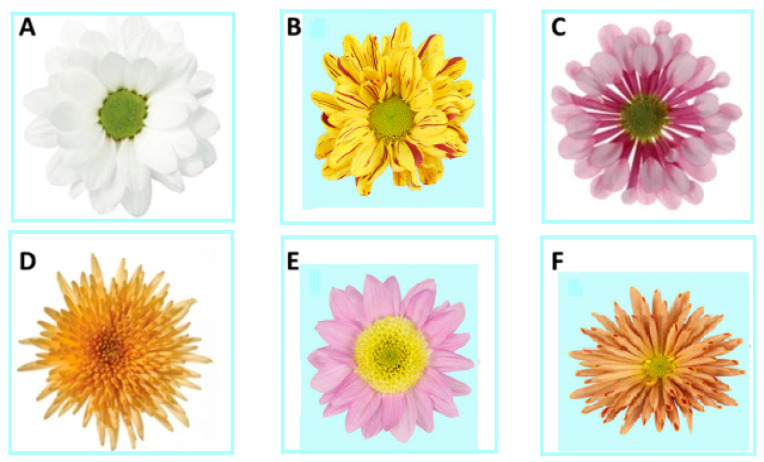Figure 1.
(A) The wild-type Chrysanthemum flower shape; (B) the double flower type, in which all of the disc florets have turned into the ray florets; (C) a spoon type is produced by partially united ray floret petals; (D) in combination with the double type, fully united ray florets produce a spider type; (E) a form of anemone with colorful and large disc floret petals.; (F) An arrangement of totally joined ray floret petals and sizable disc floret petals is known as a spider-anemone. Modified after, Spaargaren and Geest, [4].

